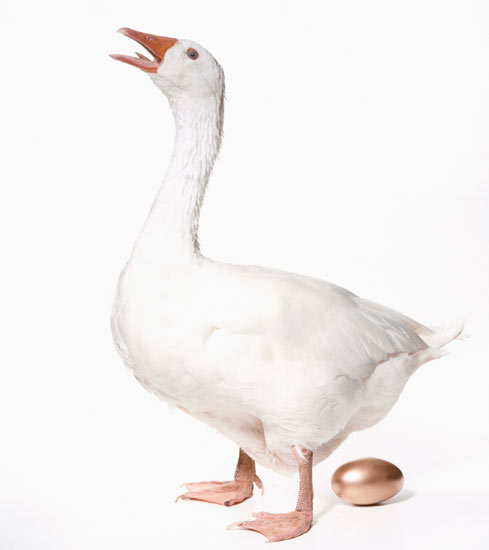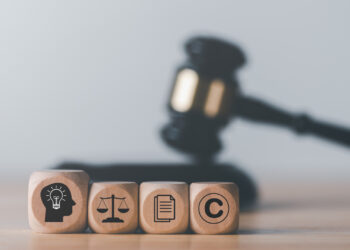
This will be the third time I’ve written in The Scholarly Kitchen about the 2008 lawsuit brought by several large academic publishers (with financial backing from the Copyright Clearance Center and the Association of American Publishers) against Georgia State University over its practice of routinely digitizing copyrighted print materials for use in its online reserve system. In my first posting on the topic (following a ruling in GSU’s favor in May 2012), I proclaimed that the “final score” in this game was “Library 94; Publishers 5,” referring to the 99 specific claims of infringement brought by the publishers—in her ruling, Judge Orinda Evans of the district court for the Northern District of Georgia found that 94 of the claims were without merit. (In 25 of those cases, the plaintiffs had failed even to demonstrate convincingly that they held the copyright in the works in question.) However, because it wasn’t clear what the penalties would be for the five infractions found by Judge Evans, I suggested that “it’s not completely clear sailing” for GSU.
Several months later the same judge denied the plaintiffs’ requests for injunctive and declaratory relief on those five infractions, and ordered the plaintiffs to pay GSU’s attorneys’ fees. At that point I changed my mind on the issue of “clear sailing,” writing that “the trouncing is complete.”
The plaintiffs appealed Judge Evans’ ruling, of course, and guess what? Now I get to reverse myself yet again, this time on my previous use of the words “trouncing” and “complete.” As it turns out, things have now gotten much more complicated than that.
In mid-October the 11th Circuit Court of Appeal issued its opinion on the District Court’s ruling, vacating Judge Evans’ order that the plaintiffs pay GSU’s attorney fees, and sending the case back to the District Court for reconsideration.
On the surface, this looks like a setback for those who have been cheering for the defendants in this case. And to be sure, it is definitely a setback for GSU—though mainly because they will now probably have to find the money to pay what are surely millions of dollars in attorneys’ fees.
But does the ruling constitute a setback for those who favor more liberal interpretations of fair use? The consensus among commentators seems to be “probably not.” According to analysts including Kevin Smith, Nancy Sims, and Joseph Storch, the Circuit Court’s decision to send the case back to the District Court for a rethink is more likely to result in a happy copyright outcome than upholding Judge Evans’ decision would have. The phrase “pyrrhic victory” has popped up many times recently in the library and scholarly-communication blogosphere.
How so? Most commentators seem to agree on several key points, including:
- The appeals court rejected plaintiffs’ call for rulings based on the large number of items involved in GSU’s practice rather than on a case-by-case analysis of each use. This is significant because treating each of the contested uses as an individual case makes it easier to find that each of them was fair.
- The appeals court found that where copying is done for nonprofit educational purposes, the nature of that use does, in fact, tend to favor a fair use finding under the first factor in the fourfold test for fair use. This has to have been deeply disappointing to the plaintiffs–especially in light of the court’s finding that the specific kind of digitization undertaken by GSU (as distinct from what was done by HathiTrust) did not constitute “transformative” reuse.
- Contrary to plaintiffs’ desires, the appeals court characterized the Classroom Copying Guidelines as a minimum safe-harbor standard, not as a limiting standard.
- Judge Evans had proposed a simple rule for deciding what would fit the substantiality test: copying up to 10% of the book’s content, or a single chapter, would be okay. Much to almost everyone’s relief (libraries as well as publishers), the appeals court rejected that idea as too simplistic.
A couple of things struck me in these commentaries, however.
The Siren Song of Simplicity
Storch, an attorney in the State University of New York’s Office of General Counsel, expressed regret that the appellate court “(cast) aside bright line rules” for academic fair use, making this (rather remarkable, I thought) observation:
The. . . case had opened up the possibility of teaching faculty how to properly make use of material using plain terms and easy-to-understand concepts, while the appeals court opinion returns us to the days of case-by-case holistic analysis and detailed exceptions, loopholes, and caveats.
While simplicity is a lovely thing when you can get it, it’s important not to get carried away by its charms. Simple and bright-line tests are as likely to limit fair use as to enhance it. Furthermore, I wince a little bit at what Storch’s lament seems to imply about his view of our faculty’s intellectual capacity (or willingness to do hard work). “We cannot expect our history and math faculty to do justice to the fair use analysis each time,” he says (we can’t?), and he predicts that faculty will instead simply divide themselves into two camps: “One group will… use whatever content they wish in whatever form they desire,” while the other, “out of an abundance of caution, will self-censor, and fail to make fair use of content for fear that they might step over a line they cannot possibly identify.”
This seems to me a bit much. Without bright-line criteria there will, of course, be some abuse (as there always has been, and always will be) and there will also be some self-censorship, but my own experience with faculty suggests that most are fully capable of understanding and applying the traditional fair use tests, and are willing to do so in a conscientious way when making use of copyrighted material in their work.
The Primary Importance of Goose Feed
I also found Nancy Sims’ commentary quite useful, but was struck by this passage:
The idea that creator remuneration is secondary to the actual purpose of copyright law is often left out of a lot of related public discourse. Most artists (and most lawyers I’ve met who represent artists or corporate creators) would put creator remuneration at the center of copyright. But this opinion (quoting from many, many other opinions) affirms again that “[p]romoting the creation and dissemination of ideas has been the goal” since the Statute of Anne, and that this is because the creation and dissemination of ideas is a public good.
It seems to me worth noting that the decision does not say that “the creation and dissemination of ideas is a public good”—it says that the financial incentives provided for by copyright law are intended “to stimulate artistic creativity for the general public good.” The difference between those two statements is significant, I think, not least because the economic concept of “a public good” is a very different thing from the colloquial concept of “the general public good.” Furthermore, in the page just prior to the one on which this quote appears, the decision approvingly quotes the U.S. Supreme Court as follows: “the economic philosophy behind the clause empowering Congress to grant copyrights is the conviction that encouragement of individual effort by personal gain is the best way to advance public welfare through the talents of authors.”
Sims observes, correctly, that “the idea that creator remuneration is secondary to the actual purpose of copyright law is often left out of a lot of related public discourse.” Obviously, this is partly because a lot of that public discourse is delivered by people who are significantly concerned with creator remuneration. But I think it’s also worth noting that the appellate court quotes Aiken (422 U.S. at 156, 95 S. Ct. at 2044) to the effect that “the immediate effect of our copyright law is to secure a fair return for an ‘author’s’ creative labor. But the ultimate aim is, by this incentive, to stimulate artistic creativity for the general public good.” Notice the much more nuanced casting here of the balance between creator remuneration and public good: remuneration is not “secondary” in the sense of “less important”; rather, it’s portrayed as a necessary condition for the achievement of the public good contemplated. In other words, the law was put in place with the express understanding that by imposing some restriction on public access and reuse (and thereby making the prospect of remuneration more likely), the public would ultimately benefit more than if there were no restriction—and that public benefit is the ultimate purpose of the copyright law. In the appellate court’s ruling, Judge Toflat puts it this way: if fair use allowances are too liberal, “we run the risk of eliminating the economic incentive for the creation of original works that is at the core of copyright and—by driving creators out of the market—killing the proverbial goose that laid the golden egg.” The ongoing supply of golden eggs is obviously the point of the law—but it seems to me that this makes feeding the goose a primary concern, not a secondary one.
But getting back to fair use and the GSU case. Speaking for myself alone, I will say this: my stance has always been that we in libraries should observe copyright law strictly, and also defend our fair use rights aggressively. I don’t always agree with my colleagues who want constantly to push the boundaries of fair use, but I also don’t believe in playing it as safe as possible—I think we need to do the necessary work of thoroughly understanding where the edge is, and then we need to go as close to it as needed (without crossing it) in order to do our work. We also need, I think, to help our faculty and students understand where that edge is so that they can do the same.
It will be very interesting to see what Judge Evans’ next ruling looks like.
Discussion
26 Thoughts on "Feeding the Goose: Thoughts on Fair Use and the GSU Decision"
I wince a little bit at what Storch’s lament seems to imply about his view of our faculty’s intellectual capacity (or willingness to do hard work). “We cannot expect our history and math faculty to do justice to the fair use analysis each time,” he says (we can’t?)
I think he’s right. Not because faculty are incapable of this kind of legal wrangling, but because they don’t want to be spending their time and effort on it — and surely that’s not we as a society want them to be doing, either? They’re paid to be teachers and researchers, not IP lawyers. Every teacher I’ve ever known has lamented the amount of their time they already have to spend on administrative overhead rather than actual teaching; I would hate to further load those teachers will copyright-law burdens.
And so:
… and he predicts that faculty will instead simply divide themselves into two camps: “One group will… use whatever content they wish in whatever form they desire,” while the other, “out of an abundance of caution, will self-censor, and fail to make fair use of content for fear that they might step over a line they cannot possibly identify.”
I think it’s inevitable that this will indeed be the outcome.
(That, along with a further erosion of the good name that publishers once had with academics.)
they don’t want to be spending their time and effort on it — and surely that’s not we as a society want them to be doing, either?
Like I said, simplicity is a lovely thing if you can get it. The problem is that, like everything else, it comes at a cost. When you adopt simple rules, you give up flexibility. When you adopt flexible rules, you give up the time and effort needed to implement them. So while it’s very nice to talk about what “we as a society” would like to have, that doesn’t get us very far. At some point we have to face the much more difficult question: what are we willing to give up in order to have it?
The entire concept of copyright, including fair use, is going through a transformation, driven by the digital revolution. In the short run simplicity is out of the question because confusion due to complexity is the price of progress. In the long run standard practices will emerge but we are not even close to that now. Confusion is rising not falling.
I spend a lot of time working in this area, and I don’t see confusion increasing. I see complexity increasing, but that doesn’t necessarily lead to confusion; often (when the underlying issues are well understood) it just leads to more work. For the most part, I think librarians understand fair-use issues quite well, and most faculty members either understand them well or can understand them quickly when they’re explained. Problems tend to arise when faculty and students act without understanding–but that’s not confusion, that’s just ignorance.
The problem is, whenever you ask anyone a question about Fair Use — any question — the answer is always the same: “it depends”. It’s hardly surprising that people don’t feel confident about employing their Fair-Use rights when no-one can tell them what those rights actually are. (For a while they could, or thought they could, at least at Georgia State, but I guess not any more.)
But that’s the nature of fair use law. Each case has to be judged on its own merits, and that’s both the strength and dilemma created by the law. Because each use gets to make its own case, this presents tremendous flexibility and room for innovation and new uses, including using the entirety of the text of a copyrighted work for something like Google creating their index. If you make strict limits on what is allowable (10% of the total content) then you strictly limit what can be done.
At the same time, you can’t know whether something is fair use until you do it and then someone sues you and a court declares whether it is or not. As Rick points out, that’s the price you pay for an open ended, flexible system. There are clear guidelines, but at best, you’re making an argument and relying on precedent, rather than a cut and dried level of assurance.
But Mike, your two statements constitute a non sequitur. Just because the answer depends from case to case doesn’t mean that no one can tell you what your rights are. It means only that in order to say what your rights are, you need to know the particulars of the case in question. Many of us make these kinds of determinations all the time, with very little effort–because we have a basic grasp of the fair use tests and know how to apply them in various situations.
“Just because the answer depends from case to case doesn’t mean that no one can tell you what your rights are.”
But it does mean that, in practice, no-one actually will. As David Crotty points out below, the only real way to find out whether or not something qualifies as Fair Use is to do it, wait till someone sues you, and then see what the court’s decision is. One can understand why people are reluctant to try this.
Mind you, It’s not like I have a better system to propose.
In the end, the best solution may be simply for teachers, including university lecturers, to use only open-access materials, so that they know they’re in the clear. At present, there’s not good enough coverage of all subjects using only OA materials, obviously (though I think we may be pretty close in palaeontology). But that’s the way to go longer term.
As David Crotty points out below, the only real way to find out whether or not something qualifies as Fair Use is to do it, wait till someone sues you, and then see what the court’s decision is. One can understand why people are reluctant to try this.
But they aren’t reluctant to try it. People exercise their fair use rights all the time, mostly with very little effort and even less worry. The application of fair use rules is not actually terribly complicated in most situations, and the risk that one undertakes by exercising them (again, in most situations) is either very low or nonexistent. Again, the fact that the answer to the question “what is a fair use?” is “it depends” doesn’t mean that everyone is confused and terrified–it just means that following the rules will lead to different outcomes from situation to situation, depending on what the situation is.
Then maybe the moral is not to ask advice about Fair Use, but just to assume it applies whenever you think it might.
I would say the moral is to do the modest amount of work necessary to come to an understanding of fair use principles, and then to apply that understanding in good faith (asking advice if and when you feel you need it).
In the end, the best solution may be simply for teachers, including university lecturers, to use only open-access materials, so that they know they’re in the clear.
But that’s not really a viable solution. Can you teach a film history class using only open access movies? The material in this case comes from books, and there’s not yet a methodology for reliably producing OA scholarly monographs.
Perhaps instead the best solution is to aim for fair use, but also be willing to pay some small fees if necessary for the uses of materials that teachers don’t create themselves that don’t qualify.
Film history — excellent example. This obviously works better with sciences (which tend to supersede their prededents) than historical disciplines (which are all about them).
Rick, I suspect you and I are using the term confusion differently. I mean it to include the mere existence of unresolved issues, especially at the conceptual level. And by concept I mean our basic understanding of the thing named by the language. This is conceptual confusion in the sense used by analytic philosophy (my field), where the analysis is of concepts. I do not mean psychological confusion.
Social revolutions almost always create widespread conceptual confusion because the meanings of the core terms involved are being reworked. In this case the concept of copyright is being reworked.
No, I think we’re using it the same way. When it comes to fair use as currently defined under the law, especially at the conceptual level, I don’t think there’s been any increase in confusion. How the concepts apply in particular circumstances is sometimes more or less clear, but that’s because the number and complexity of the situations in which they apply has been growing. I don’t think it’s because we’re increasingly confused about what fair use is.
But the case we are discussing is expected to create new law, thus changing the legal definition. In fact you mention that if the different counts are considered separately there may be a lot of new law regarding fair use. That the number and complexity of the situations, in which we are not sure how the concept of fair use applies, is growing is just what I mean when I say the confusion is increasing. Not knowing how a concept applies to a situation is the essence of conceptual confusion. It is a standard feature of social change.
In my use of the term confusion the prevalence of speculation, including this blog article, is symptomatic of concept change. We are in what I call the concept articulation phase, which is characterized by a growing issue tree as the details of the new concept get worked out. Because of this tree structure the number of considerations increases exponentially with level of detail and this is just what we see in all the discussion. Moreover, after the case is resolved there will still be a great deal of articulation work will be done before practice stabilizes in the new ways of copyright and fair use, if the Court decisions create significant new law that is. (This is the standard logic of social change, which I first described in a paper titled “The Structure of Technological Revolutions” back in 1973.)
But the case we are discussing is expected to create new law, thus changing the legal definition.
No, I don’t think that’s true. The final ruling in this case will resolve a dispute that has been brought under the existing law–it won’t create any new laws.
In fact you mention that if the different counts are considered separately there may be a lot of new law regarding fair use.
No–I said that if the different counts are considered separately each of them is more likely to be found (under existing law) to constitute fair use. No matter how you count them, the law stays the same. The law won’t change unless Congress changes it.
At least in public colleges and universities, the eleventh ammendment de-fangs rights holders and/or their representatives where faculty use copyrighted materials in the course of their scholarly work without consent – including but not limited to teaching. About all that can be done via the courts is to order such faculty to cease and desist. Sovereign immunity means no fines nor any jail time. So, those faculty taking the more liberal view of fair use should know that they have far fewer consequences to worry about.
However, it’s not surprising to find so little discussion of this factor. Rights holders have been rather successful in promoting the false belief that faculty can be fined or even imprisoned if they estimate fair use rights too liberally. They have managed, through the Higher Education Opportunity Act of 2008, to have faculty and students warned twice a year in a most Draconian fashion. In talking with my colleagues throughout the state of Georgia, I find that self-censorship is very much a factor. Here’s an excerpt of the most recent missive from my university (boiler plate used throughout the University System of Georgia):
Penalties for copyright infringement may include actual or statutory damages. Willful copyright infringement can result in criminal penalties and substantial fines. For more information please refer to the U.S. Copyright Office at http://www.copyright.gov, particularly their FAQ at http://www.copyright.gov/help/faq.
There is no direct mention of fair use, only a link to our university system’s copyright guidelines which do include a discussion of academic fair use for faculty but not for students (e.g. parody, criticism, etc.). A cursory reading will most likely result in self-censorship which is the intent of this “information campaign.”
… where faculty use copyrighted materials in the course of their scholarly work without consent – including but not limited to teaching.
By the way, this kind of situation is why I always advocate universal open access, rather than (say) OA as part of the market along with subscriptions, or indeed very cheap subscriptions. To me, the idea of teachers being limited in their teaching by copyright issues is inherently absurd, not to mention offensive — and directly contrary to the stated purpose of copyright in the US Constitution.
Really, this kind of thing shouldn’t even be an issue. One of the benefits of universal OA will be to sweep away all this cognitive overhead.
(I realise this is tangential. Just throwing it out there because Frank’s turn of phrases inadvertently tickled my sense of outrage.)
While the intent of the legislators who wrote the copyright statutes **may** have been to protect the financial interests of content creators, that intent is trumped by the intent of the framers of the U.S Constitution. That intent clearly places the general public good ahead of those financial interests. Lydia Pallas Loren makes this abundantly clear in “The Purpose of Copyright” http://www.public.asu.edu/~dkarjala/publicdomain/Loren2-7-00.html
The Constitution provides both the “why” and the “how” of copyright: a monopoly for a limited period of time. Congress sets the limit. Monopoly until that time is over. This is one of Rick’s points, and I believe he is correct. Now let’s all get back to work.
What the Constitution actually says is that Congress shall have the right “to promote the Progress of Science and useful Arts, by securing for limited times to Authors and Inventors the exclusive Right to their respective Writings and Discoveries.” While that phrase has a pretty clear meaning as to what copyright law will provide (i.e. a limited number of more-or-less exclusive rights for authors and inventors), it has become a Rorschach test as to what the deeper meaning and purposes of copyright law are–by which I mean that no matter how strict or liberal you believe copyright rules should be, you can justify your belief by appealing to “the progress of science and useful arts.” (And everyone, in my experience, believes that their own understanding of the deeper purposes of copyright law is the one that clearly and obviously reflects the original intent of the Framers.)



